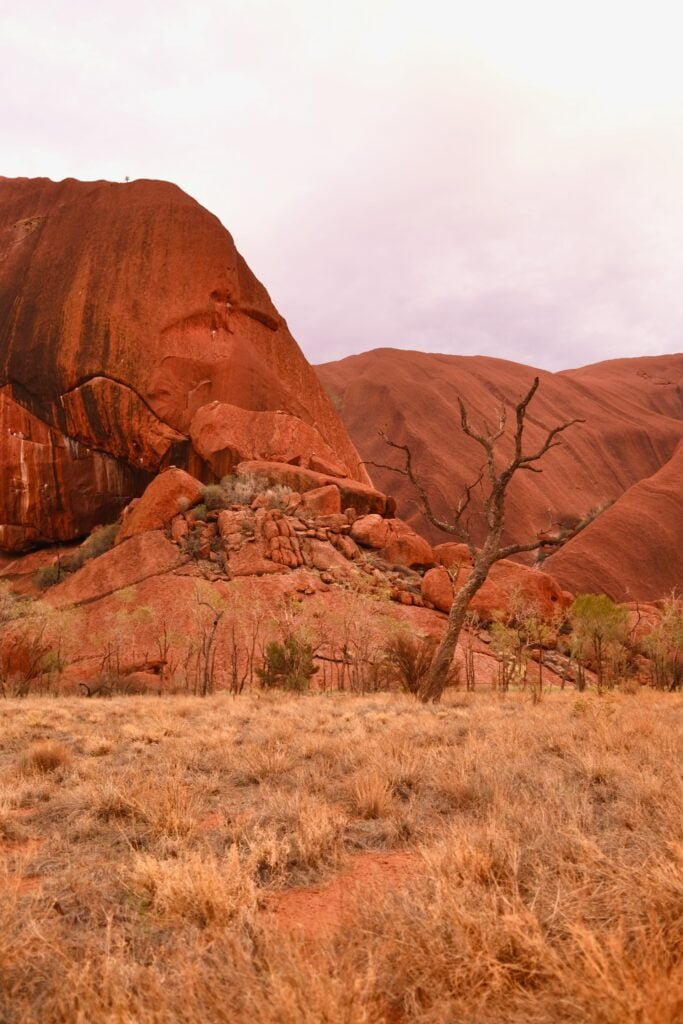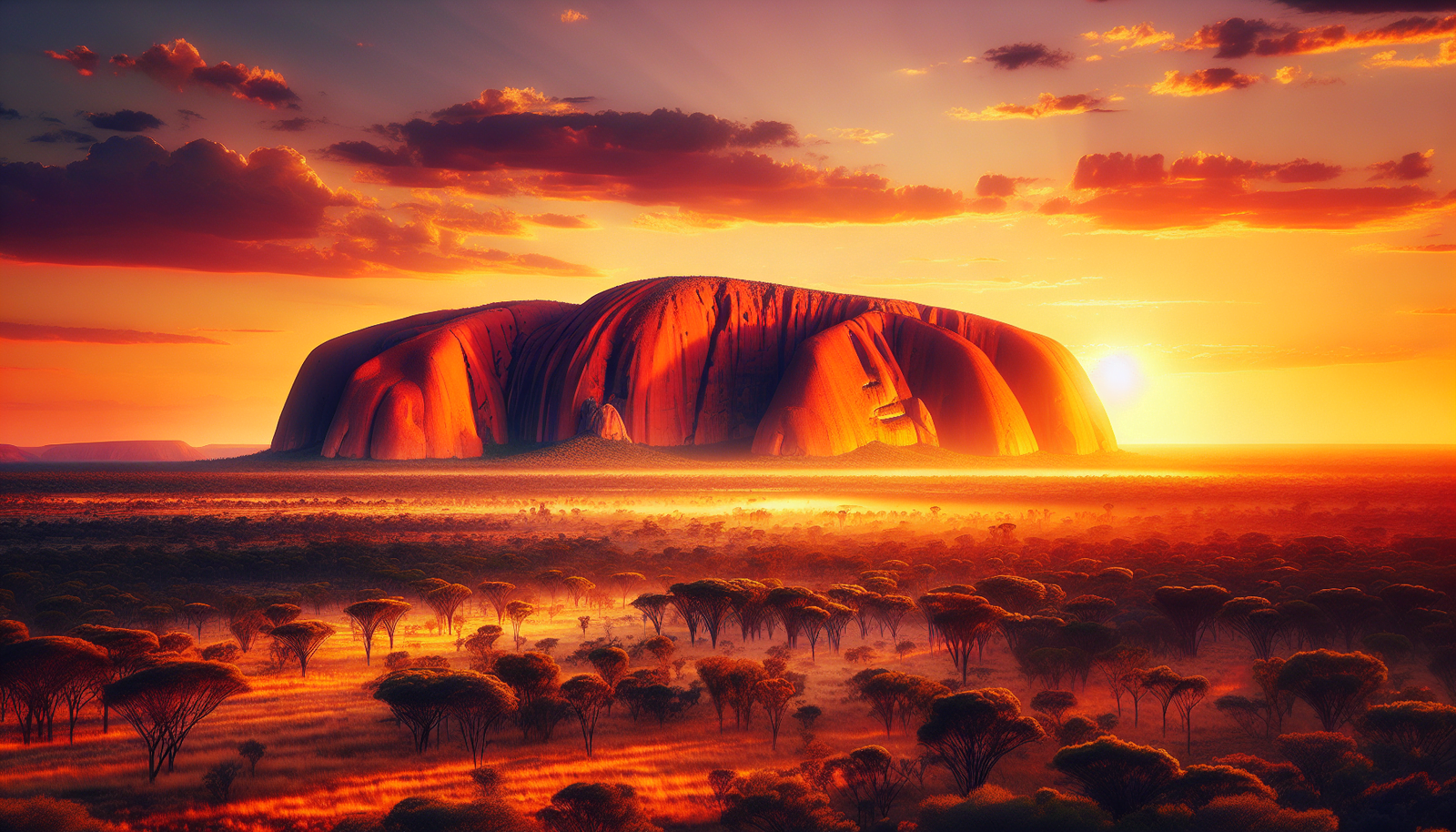Venture into the heart of Australia with Uluru tours from Alice Springs. A blend of cultural enlightenment and natural beauty, this adventure will take you on a journey through the rich Aboriginal history nestled in the breathtaking Uluru-Kata Tjuta National Park. From the stunning sunrise over the park’s iconic red rocks to the awe-inspiring sacred sites, the journey promises an unforgettable exploration of Australia’s spiritual core. Fasten your seatbelts as you’re about to experience a lifetime adventure with Uluru tours from Alice Springs.

Overview of Alice Springs
Alice Springs is a delightful town nestled in the heart of Australia’s Northern Territory. Known for its unique, vibrant energy, it serves as a gateway to some of the country’s most treasured natural wonders, including the famous Uluru.
Geographical location of Alice Springs
Located almost equidistant between Darwin and Adelaide, Alice Springs is near the geographic center of Australia. Surrounded by the MacDonnell Ranges and the vast expanses of desert, the town provides a stepping stone into the remote beauty of the outback.
Brief history of Alice Springs
Born from the installation of the Overland Telegraph Station in 1872, Alice Springs, once a remote settlement, has grown into a bustling township. It was initially called Stuart, after the explorer who traversed the center of Australia. However, it was later renamed Alice Springs, after the wife of the former Postmaster General of South Australia.
Cultural significance of Alice Springs
Alice Springs is deeply steeped in Indigenous culture. It’s home to a thriving community of Arrernte people who have lived in the region for thousands of years. Art, music, and traditional performances are an integral part of life in Alice Springs, making it a hub for cultural interchange and preservation.
Defining Uluru
Uluru, formerly known as Ayers Rock, is one of Australia’s most iconic landmarks. Its sheer magnitude and cultural significance are unparalleled.
Definition and meaning of Uluru
Uluru is a large sandstone rock formation, spectacularly rising from the flat desert landscape. The name “Uluru” is derived from Aboriginal languages, and it signifies “Earth Mother.” This majestic monolith holds deep spiritual importance to the local Anangu people.
Historical background of Uluru
Uluru is believed to be over 550 million years old. However, the local Anangu people have been its custodians for tens of thousands of years, and their stories, customs, and law are intertwined with the physical characteristics of the rock itself. In 1987, Uluru-Kata Tjuṯa National Park was inscribed on the UNESCO World Heritage List.
Cultural and spiritual significance of Uluru
Uluru is sacred to the Anangu people. It’s a place where they connect with their ancestors and the spirits of the land. Numerous creation stories are associated with unique features of Uluru, and many of these stories are depicted in rock paintings around the formation.
Types of Tours from Alice Springs to Uluru
There is an array of tours available for those seeking to discover the magic and history of Uluru, each offering a unique perspective on the landmark.
Day Tours
For those short on time, day tours from Alice Springs to Uluru provide a condensed but enriching experience. These tours typically include guided walks, informative talks about the local flora and fauna, and a beautiful sunset viewing over Uluru.
Overnight Tours
For a more immersive experience, overnight tours allow you to sleep under a canopy of stars and watch both the sunset and sunrise over Uluru. These tours can range from basic camping to luxury glamping.
Camp-based Tours
Camp-based tours provide a rustic and intimate experience. Camping near Uluru under the outback sky is a unique and memorable way to fully appreciate the area’s natural beauty.
Adventure Tours
For the thrill-seekers, adventure tours offer exhilarating activities like camel riding, quad biking or hot air ballooning, adding an exciting dimension to the Uluru experience.
Understanding the Geography of the Journey
The journey between Alice Springs and Uluru traverses the beautiful and rugged landscape of Australia’s Red Centre, and understanding its geography provides a richer touring experience.
Distance between Alice Springs and Uluru
The distance between Alice Springs and Uluru is around 450 kilometers, equivalent to about a 5-hour drive through iconic red desert landscapes.
Terrain and landscapes
The Red Centre is characterized by its arid desert climate, undulating dunes, ancient mountain ranges, and sparse yet resilient vegetation. The journey unveils the ever-changing color palette of the landscape, punctuated by the stunningly dramatic Uluru.
Climate and weather factors
The region experiences a desert climate with hot summers, mild winters, and low rainfall. The climate can be extreme, with hot days followed by chilly nights, therefore, understanding the weather patterns is critical for trip planning.

Transportation Options for Uluru Tours
The transport choices for Uluru Tours from Alice Springs cater to differing preferences for comfort, budget and adventure levels.
Bus rides
Bus tours remain a popular choice, combining comfort with affordability. They offer guided experiences with on-board commentary, taking passengers directly from Alice Springs to Uluru.
Car hires
Renting a car gives you the flexibility to explore at your own pace, heading off the beaten track to discover hidden gems along the way.
Cycling
For those keen on a physical challenge, cycling tours will inject a workout into your sightseeing, providing an eco-friendly and immersive mode of transport.
Helicopter tours
A helicopter tour offers a breathtaking aerial perspective of Uluru and its surroundings—arguably the most remarkable way to appreciate the expansive landscape.
Best Time to Take Uluru Tours
Choosing the right time to tour Uluru can have a significant impact on your experience.
Seasonal considerations
Between May and September, the weather is cooler, making it the most comfortable time for outdoor activities. Summer can witness extreme heat, so it’s less ideal for those unaccustomed to such conditions.
Understanding the desert’s ‘Red Centre’
The Red Centre earns its name from the startlingly red sand that dominates the landscape. The red tones are at their most vibrant at sunrise and sunset, making these times particularly enticing for photographers.
Temperature fluctuation
The desert experiences significant temperature changes between day and night. Dressing in layers is advised to accommodate these fluctuations.

Safety Preparations for the Tour
Traveling through the outback requires thorough planning and preparation to ensure a safe and enjoyable journey.
Appropriate clothing
Dress in breathable, light-colored clothing during hot weather, and remember to pack warm clothes for the cool desert nights. Sunscreen, hats, and sunglasses are essentials for sun protection.
Food and water supplies
While tour services will likely provide food and water, it’s always a good idea to carry extra supplies as the desert can dehydrate you faster than you might expect.
First aid considerations
A basic first aid kit could prove invaluable on the remote trails, so make sure it’s a part of your packing list.
Contact information and emergency procedures
Ensure you have the contact information for local emergency services, understand the basic emergency procedures, and inform others of your plan.
Tour Activities at Uluru
Uluru offers a wealth of activities to engage, educate and inspire all types of visitors.
Sightseeing spots
Apart from the commanding Uluru, nearby Kata Tjuta (the Olgas) and Kings Canyon are other must-see spots, each offering compelling geological features and breathtaking views.
Cultural experiences
Guided tours by local Anangu people introduce the deep cultural significance of Uluru, sharing fascinating stories, traditional methods of food gathering, and art demonstrations.
Hiking trails and fitness levels
A variety of walking trails suited to different fitness levels wind their way around Uluru, including the base walk, which allows a close-up view of the rock.
Photography opportunities
Uluru offers amazing photography opportunities, especially at sunrise and sunset when the rock changes color dramatically.

Park Guidelines and Respect for Indigenous Culture
Visiting Uluru is a privilege, and guidelines are set to ensure respect for the Anangu people and their culture.
Understanding the Anangu people’s requests
The Anangu people request that tourists do not climb Uluru due to its spiritual significance. Understanding and respecting this request is an important part of the Uluru experience.
Rules on climbing Uluru
In line with the Anangu people’s wishes, climbing Uluru is no longer allowed, a change implemented in 2019 to protect the site’s cultural integrity.
Maintenance of flora and fauna
Visitors are asked to stick to the guided paths to maintain the flora and fauna of the park and prevent soil erosion and disturbance to wildlife.
Importance of cultural sensitivity
The Anangu people encourage visitors to learn about their culture and customs. It’s essential to approach these learning opportunities with an open mind and respectful attitude.
Accommodations and Dining Options in Uluru
A range of accommodations and dining options around Uluru cater to various budgets and preferences.
Hotels and lodges near Uluru
From the luxury of the Sails in The Desert hotel to the more budget-friendly Outback Pioneer Lodge, there are accommodations to suit every taste.
Campgrounds and budget accommodations
For a more authentic feel of the outback, camping options are also available, with sites offering basic amenities to ensure a comfortable stay.
Dining options and cuisine
The dining scene is varied, from upscale restaurants offering Australian bush food to relaxed cafés serving light meals, ensuring you’ll find something that suits your appetite.
Nightlife and entertainment in Uluru
The Uluru region offers unique outback entertainment, with highlights including Sounds of Silence—a dining experience under the stars, complete with an astronomer’s tour of the night sky. The local town of Yulara also extends a variety of leisurely options.








